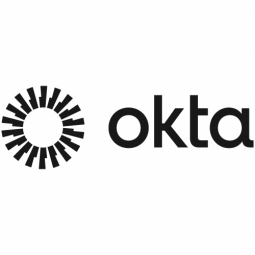Customer Company Size
Mid-size Company
Region
- Europe
Country
- Netherlands
Product
- Okta
- BambooHR
- Okta Identity Governance
Tech Stack
- Single Sign-On (SSO)
- Multi-Factor Authentication (MFA)
- Advanced Server Access
- Lifecycle Management
- Okta Workflows
Implementation Scale
- Enterprise-wide Deployment
Impact Metrics
- Productivity Improvements
- Customer Satisfaction
- Digital Expertise
Technology Category
- Cybersecurity & Privacy - Identity & Authentication Management
- Application Infrastructure & Middleware - API Integration & Management
Applicable Industries
- Finance & Insurance
- Software
Applicable Functions
- Business Operation
- Human Resources
Services
- System Integration
- Software Design & Engineering Services
About The Customer
Founded in 2012 in the Netherlands, bunq is a digital bank that has revolutionized the banking experience by offering a versatile banking app and a service-oriented business model. The company is known for its swift account creation and user-centric approach, making it popular among digital nomads and international businesses. bunq's mission is to make banking as easy as possible for its users, empowering them to manage their finances independently. The bank has expanded its services to 30 countries across Europe, providing a banking-on-the-go solution that caters to the needs of its diverse user base. During the Covid-19 pandemic, bunq's employee count more than doubled, reflecting its rapid growth and the increasing demand for its innovative banking services.
The Challenge
bunq, a rapidly growing digital bank, faced challenges in managing identity and access management due to its expanding user base and employee count. The manual identity and access management solutions were struggling to keep up with the growth, leading to inefficiencies and potential security risks. The company needed a scalable system that could handle access and authentication for its applications while ensuring compliance with security standards. The existing process of manually creating users in the LDAP system was time-consuming and prone to errors, taking about two hours per request. Additionally, the lack of an overarching MFA setup meant that enforcing MFA had to be done on a per-app basis, which was cumbersome and inconsistent.
The Solution
To address the challenges, bunq partnered with Okta and FuseLogic to implement a comprehensive identity and access management solution. The integration of Okta with bunq's HR system, BambooHR, was completed in just two weeks, laying the foundation for automated identity processes. Okta's Lifecycle Management was deployed to automate application provisioning and deprovisioning, reducing the administrative burden on the IT team. The implementation of Single Sign-On (SSO) and Adaptive Multi-Factor Authentication (MFA) provided a consistent and secure access experience for employees. Advanced Server Access was introduced to streamline access permissions for developers, significantly reducing onboarding time. Custom workflows and alerts were created to enhance security and compliance, ensuring that any suspicious activity was promptly addressed. The automation of audit preparation work further facilitated compliance processes, allowing bunq to focus on its core mission of providing a seamless banking experience.
Operational Impact
Quantitative Benefit

Case Study missing?
Start adding your own!
Register with your work email and create a new case study profile for your business.
Related Case Studies.

Case Study
Real-time In-vehicle Monitoring
The telematic solution provides this vital premium-adjusting information. The solution also helps detect and deter vehicle or trailer theft – as soon as a theft occurs, monitoring personnel can alert the appropriate authorities, providing an exact location.“With more and more insurance companies and major fleet operators interested in monitoring driver behaviour on the grounds of road safety, efficient logistics and costs, the market for this type of device and associated e-business services is growing rapidly within Italy and the rest of Europe,” says Franco.“The insurance companies are especially interested in the pay-per-use and pay-as-you-drive applications while other organisations employ the technology for road user charging.”“One million vehicles in Italy currently carry such devices and forecasts indicate that the European market will increase tenfold by 2014.However, for our technology to work effectively, we needed a highly reliable wireless data network to carry the information between the vehicles and monitoring stations.”

Case Study
Safety First with Folksam
The competitiveness of the car insurance market is driving UBI growth as a means for insurance companies to differentiate their customer propositions as well as improving operational efficiency. An insurance model - usage-based insurance ("UBI") - offers possibilities for insurers to do more efficient market segmentation and accurate risk assessment and pricing. Insurers require an IoT solution for the purpose of data collection and performance analysis

Case Study
Smooth Transition to Energy Savings
The building was equipped with four end-of-life Trane water cooled chillers, located in the basement. Johnson Controls installed four York water cooled centrifugal chillers with unit mounted variable speed drives and a total installed cooling capacity of 6,8 MW. Each chiller has a capacity of 1,6 MW (variable to 1.9MW depending upon condenser water temperatures). Johnson Controls needed to design the equipment in such way that it would fit the dimensional constraints of the existing plant area and plant access route but also the specific performance requirements of the client. Morgan Stanley required the chiller plant to match the building load profile, turn down to match the low load requirement when needed and provide an improvement in the Energy Efficiency Ratio across the entire operating range. Other requirements were a reduction in the chiller noise level to improve the working environment in the plant room and a wide operating envelope coupled with intelligent controls to allow possible variation in both flow rate and temperature. The latter was needed to leverage increased capacity from a reduced number of machines during the different installation phases and allow future enhancement to a variable primary flow system.

Case Study
Automated Pallet Labeling Solution for SPR Packaging
SPR Packaging, an American supplier of packaging solutions, was in search of an automated pallet labeling solution that could meet their immediate and future needs. They aimed to equip their lines with automatic printer applicators, but also required a solution that could interface with their accounting software. The challenge was to find a system that could read a 2D code on pallets at the stretch wrapper, track the pallet, and flag any pallets with unread barcodes for inspection. The pallets could be single or double stacked, and the system needed to be able to differentiate between the two. SPR Packaging sought a system integrator with extensive experience in advanced printing and tracking solutions to provide a complete traceability system.

Case Study
Transforming insurance pricing while improving driver safety
The Internet of Things (IoT) is revolutionizing the car insurance industry on a scale not seen since the introduction of the car itself. For decades, premiums have been calculated using proxy-based risk assessment models and historical data. Today, a growing number of innovative companies such as Quebec-based Industrielle Alliance are moving to usage-based insurance (UBI) models, driven by the advancement of telematics technologies and smart tracking devices.
Case Study
Enhancing Security and Compliance in Remitly's Global Money Transfer Service with Fastly
Remitly, an online remittance service, was faced with the challenge of securing its proprietary global transfer network. The company needed a security solution that could meet PCI requirements and protect customers' sensitive transactions through its mobile application. The solution had to be capable of defending against new and emerging attack types without impacting performance. Remitly also had to deal with irregular traffic patterns, such as a sudden spike in account transfers from a small network segment on the Pacific coastline of South America. The company needed to determine in real time whether such traffic indicated an attack or valid requests. A traditional web application firewall (WAF) would not be able to distinguish this traffic, potentially leading to customer frustration if the IP was blacklisted.







